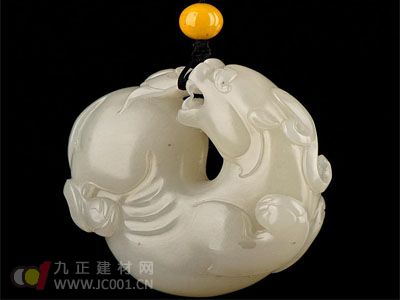Jade knowledge
Imagine a piece of jade placed before you. At first glance, it might not seem special—raw jade often looks similar to ordinary stones or pebbles. However, in ancient times, the value of jade was deeply rooted in its cultural and spiritual significance. The people of Chu were known for their deep respect for jade, even if it meant risking their lives. Many individuals suffered harsh consequences simply for being unable to recognize the true worth of jade, sometimes accused of deceiving the king. Jade formation is not much different from that of common stones or iron ore, but the mining conditions vary greatly. This is due to the unique ways in which jade deposits occur in nature, making them distinct and more challenging to extract. What makes a piece of jade "good"? This question has no simple answer, as the definition of jade is broad and subjective. According to Xu Shen, a scholar from the Han Dynasty, "Jade is a beautiful stone." In general, jade refers to naturally occurring minerals that, when processed, become smooth, colorful, and durable. They should also have stable chemical properties and be resistant to damage over time. Commonly, jade is divided into two main types: nephrite and jadeite. Nephrite includes white jade, sapphire, jasper, and topaz, while jadeite is a type of green stone from Myanmar that resembles nephrite in texture. Diamonds, rubies, and crystals are typically classified as gemstones in a narrower sense, while items like ivory, coral, and tortoise shells fall under "organic gemstones." Both soft and hard jade must meet certain standards—hardness, compact texture, and vibrant color are essential characteristics. Jade culture is one of the most unique and profound aspects of Chinese heritage. It spans the entire history of China, from ancient times to modern days. Throughout history, there have been countless stories, legends, and emotional tales involving jade—some touching, others tragic. Many Chinese words incorporate the character for jade, such as "jade girl," "jade hand," and "jade voice," used to describe beauty, virtue, or something precious. Even in expressions related to sacrifice or suffering, jade is often used metaphorically. While other cultures have developed their own traditions around jade, none match the depth and continuity found in Chinese culture. From the early Neolithic era to today's high-tech world, jade has remained a significant symbol across all historical periods. Its meaning has evolved over time, becoming deeply intertwined with spirituality, identity, and tradition. The earliest known jade artifacts in China date back over 12,000 years, found at the Xiancheng Cave site in Liaoning. These were made from serpentine stone. Later, jade objects from the Hemudu site in Zhejiang, dating back 7,000 years, showed a growing appreciation for this material. Over time, people began to refine their techniques, leading to the creation of more intricate and decorative pieces. Even in ancient times, jade was seen as something mystical, with some communities placing jade in the mouths of the deceased, suggesting a belief in its spiritual power. For those who love jade, one of the biggest concerns is encountering fake products. These imitations can be misleading and difficult to distinguish without proper knowledge. One of the most common fakes on the market is glass, often shaped into small rings, pendants, or tablets that resemble jade. Glass imitations tend to have a slight bulge along the edges due to the molding process, which can be easily spotted by touch or sight. With a magnifying glass, you may even see bubbles trapped inside, revealing the product’s artificial nature. Down The Hole Drill Bit,High Dth Hammers And Button Bits,Tungsten Carbides Tapered Button Mining Bits,High Button Rock Drill Tool Bits Zhenjiang Weir Machinery Technology Co., Ltd , https://www.weircuttingpicks.com